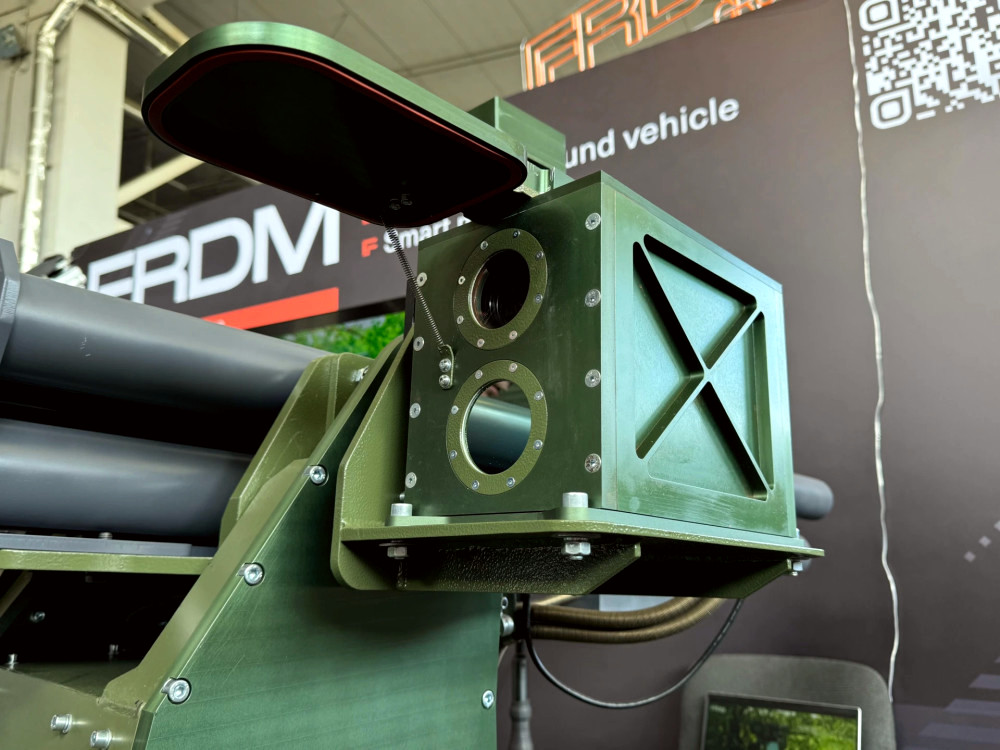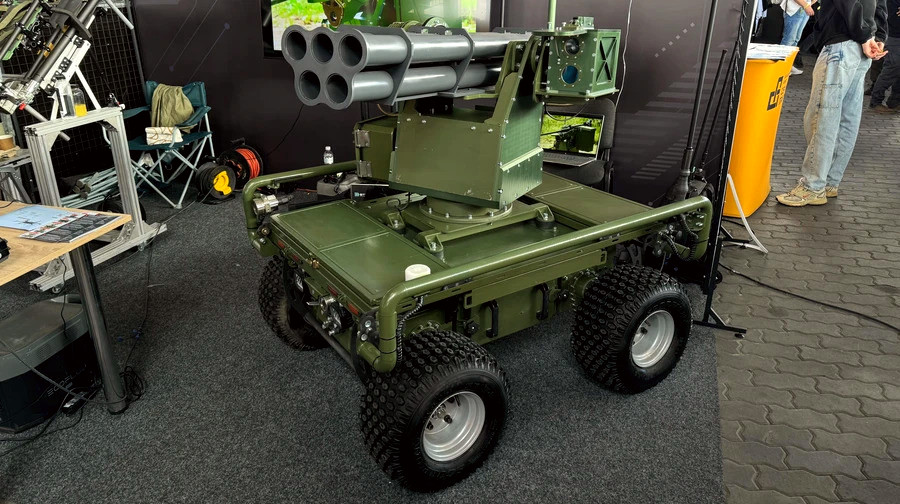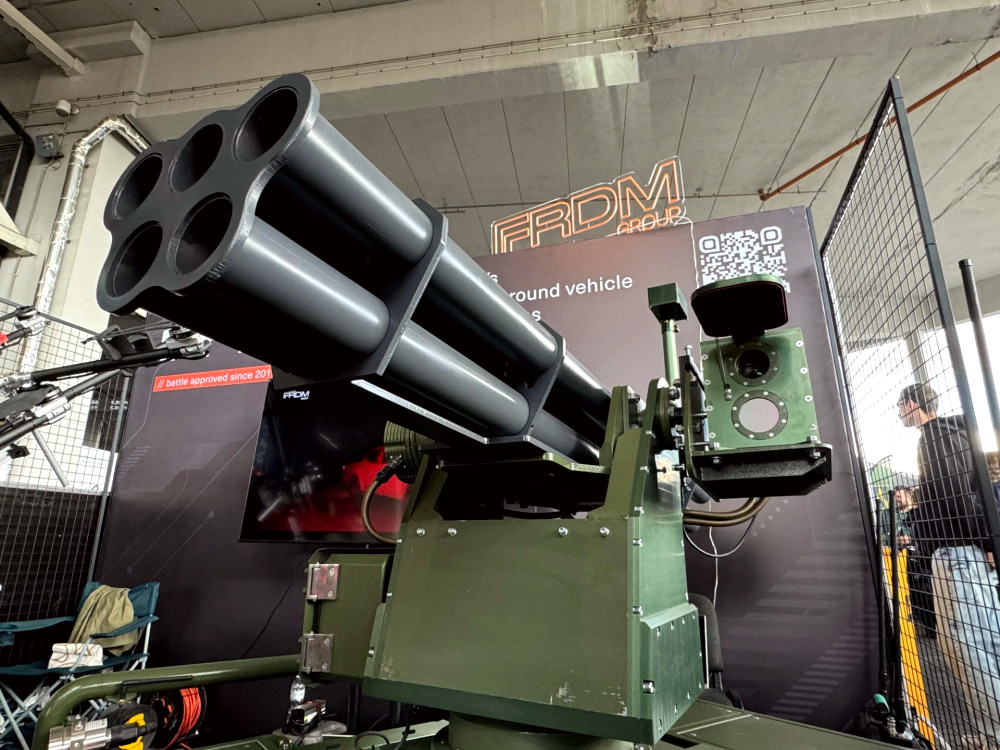FRDM Group has showcased an enhanced version of the D-21 ground robotic system, equipped with the D-18 combat module that features five launchers for 70-mm rockets. A journalist from "Oboronka" interviewed the system's developer at the Brave1 Defense Tech Valley 2025 exhibition.
The primary goal of this development was to increase the strike range of existing weaponry with the D-21 system. This missile system can hit targets at a distance of up to 10 km. Considering the ability to control the robot from 5 km away, the effective range extends to 15 km from the launch position.
"Our aim was to replace large multiple launch rocket systems on the battlefield. In our context, the firing range of such systems is about 15 km, which we cover with our product. It’s significantly cheaper, more mobile, and can launch rockets from a distance," explained a representative of FRDM Group known by the call sign "Sukhari."
The robotic platform has a payload capacity of 200 kg on soft ground and 300 kg on hard surfaces, allowing for a module of five Hydra 70 rockets. However, the developer has planned for integration of additional launchers for heavier chassis.
The development team notes that the mobile MLRS has several applications. It can strike targets nearby or fire from cover, significantly reducing the system's visibility compared to larger systems.
Before moving to a combat position, operators identify the firing point and reference for targeting. To protect the control module's cameras from dust and rocket fuel combustion products, they are shielded with a cover that opens only when the robot is placed in the firing position.
The MLRS operation involves not only unguided 70-mm rockets but also laser-guided missiles. The FRDM Group team has simultaneously integrated a laser targeting system on the R-34 drone, which can provide target designation for the rocket launchers.
"Our infantry currently lacks adequate tools for laser guidance. However, we have drones capable of carrying payloads and fulfilling this function. Our coded solution can already find, scout a target, and create a laser beam with coordinates that the ground robot is directed to. The system then executes the launch, and the missile is guided to the target via laser," explained a representative of FRDM Group.
The fire system has a significant upgrade potential aimed at developing a complex for combating aerial targets. The future D-18 module based on the D-21 robot will be designed to guide laser missiles at aerial targets such as strike and reconnaissance drones operating along the front line.
Thus, Ukrainian developers might soon create a system similar to the American VAMPIRE air defense complex with upgraded Hydra 70 missiles. This complex has proven effective against drones like the "Shahed."



